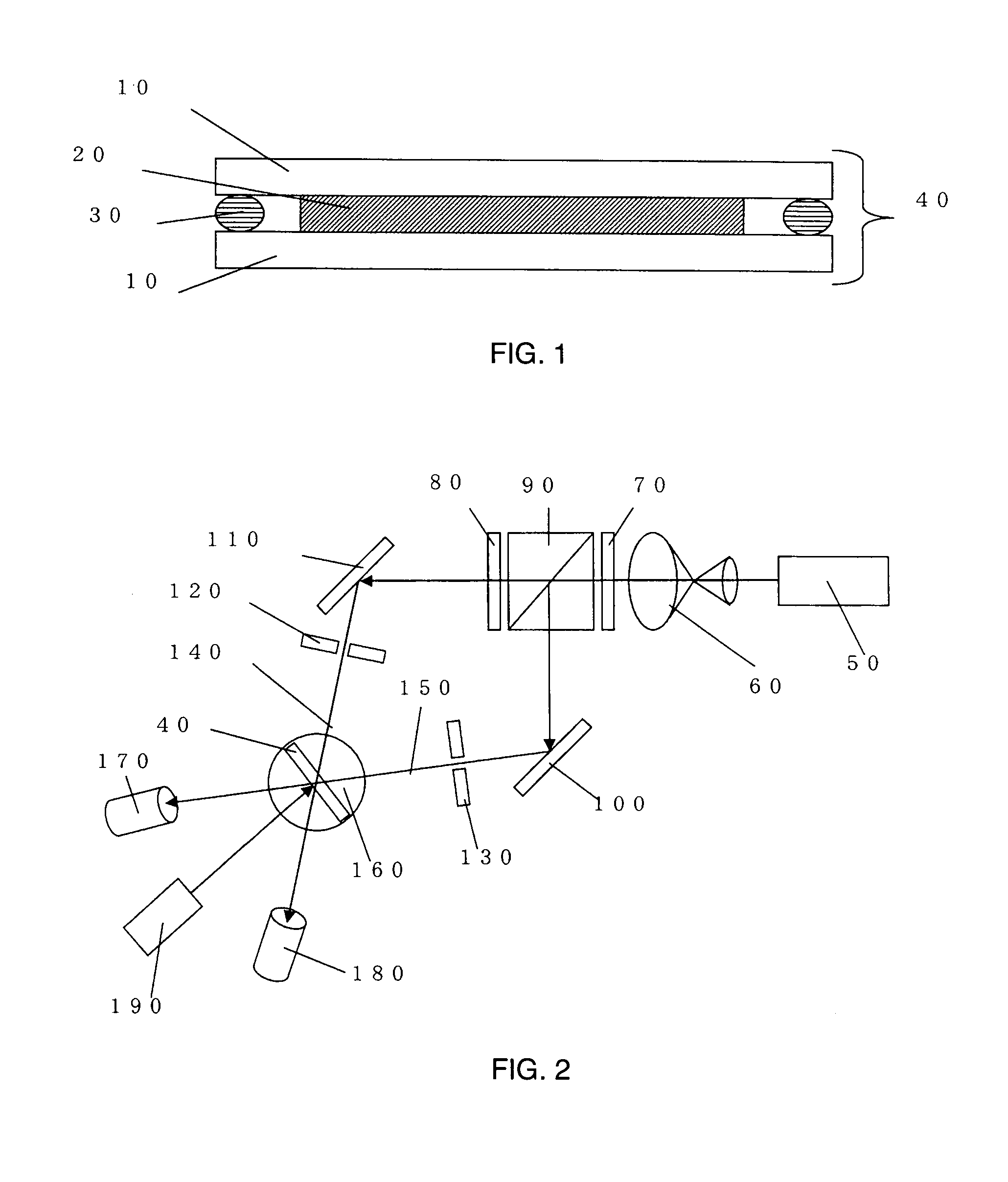Holographic recording medium
- Summary
- Abstract
- Description
- Claims
- Application Information
AI Technical Summary
Problems solved by technology
Method used
Image
Examples
synthesis example 1
Synthesis of 2-vinyl dibenzothiophene
[0140]2-vinyl dibenzothiophene was synthesized using the above mentioned method A under the following conditions.
[0141]Under a nitrogen atmosphere, 154.0 g (836 mmol) of dibenzothiophene was taken into a 2 L-flask provided with a stirrer and a dropping funnel, and 850 mL of chloroform was added to the flask to be dissolved. The resultant solution was cooled at 0° C. by a NaCl-ice bus, and 136.1 g (852 mmol) of bromine was dropped over 40 minutes. In the meantime, the temperature of the resultant solution was held at 0° C. After stirring at 0° C. for 30 minutes, the resultant solution was warmed to room temperature to be stirred for 3 days.
[0142]The reaction solution was filtered, and the crystal precipitated was washed to be filtered twice by 200 mL of methanol. Vacuum drying of the obtained crystal was carried out at 50° C. for 3 hours, and 2-bromo dibenzothiophene was obtained. The obtained was a white powder crystal. The yield of the white pow...
synthesis example 3
Synthesis of 4-vinyl dibenzothiophene
[0172]4-vinyl dibenzothiophene was synthesized using the above mentioned method C.
[0173]11.1 g (40 mmol) of 4-bromomethyl dibenzothiophene and 10.5 g (40 mmol) of triphenylphosphine were taken into a 500 mL-flask with a stirrer and a condenser tube, and 200 mL of xylene was added to the flask to be dissolved while heating the flask in an oil bath to be heated to reflux for 4 hours. After cooling, suction filtration was carried out to obtain a precipitated crystal. The precipitated crystal was washed with hexane, and dried in a vacuum, thus providing a raw crystal of (dibenzothiophene 4-yl)methyl triphenyl phosphonium bromide.
[0174]The raw crystal of (dibenzothiophene 4-yl)methyl triphenyl phosphonium bromide was taken into a 300 mL flask with a stirrer, and 100 mL of ethylene chloride was added to be dissolved while stirring. 30 mL (402 mmol) of 37% (about 13.4M) formaldehyde water solution is added to the above resultant solution to be stirred. ...
example 1
[0202]4.54 g of 1,6-hexanediol diglycidyl ether (epoxy equivalent: 151) employed as an epoxy monomer and 0.364 g of aluminum tris(ethylacetyl acetate) employed as a metal complex were mixed with each other in a dark room to obtain a mixture. This mixture obtained was then allowed to dissolve while stirring to prepare a solution of the metal complex.
[0203]Furthermore, 4.55 g of 1,6-hexanediol glycidyl ether (which has an epoxy equivalent weight 151) and 0.545 g of triphenyl silanol as alkyl silanol were mixed with each other to obtain a mixture.
[0204]A metal complex solution and the silanol solution were mixed with each other to further stir. 0.529 g of a radical polymerizable monomer and 0.042 g of a photo-radical polymerization initiator were added to the obtained solution. As the radical polymerizable monomer, 2VDbt of the compound 1 was employed. As the photo-radical polymerization initiator, bis(.eta.5-2,4-cylcopentadien-1-yl)-bis(2,6-difluoro-3-(1H-pyrrol-1-yl)-phenyl) titanium...
PUM
 Login to View More
Login to View More Abstract
Description
Claims
Application Information
 Login to View More
Login to View More - R&D
- Intellectual Property
- Life Sciences
- Materials
- Tech Scout
- Unparalleled Data Quality
- Higher Quality Content
- 60% Fewer Hallucinations
Browse by: Latest US Patents, China's latest patents, Technical Efficacy Thesaurus, Application Domain, Technology Topic, Popular Technical Reports.
© 2025 PatSnap. All rights reserved.Legal|Privacy policy|Modern Slavery Act Transparency Statement|Sitemap|About US| Contact US: help@patsnap.com



